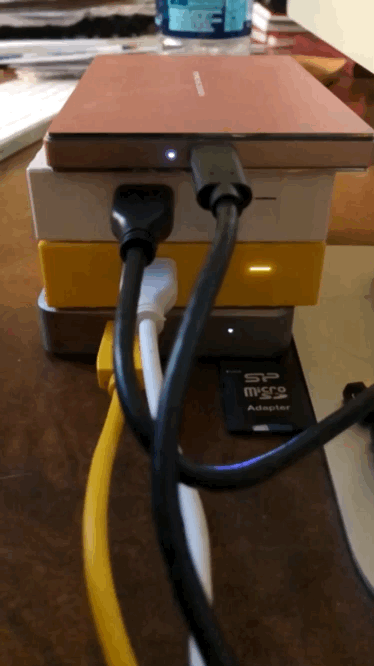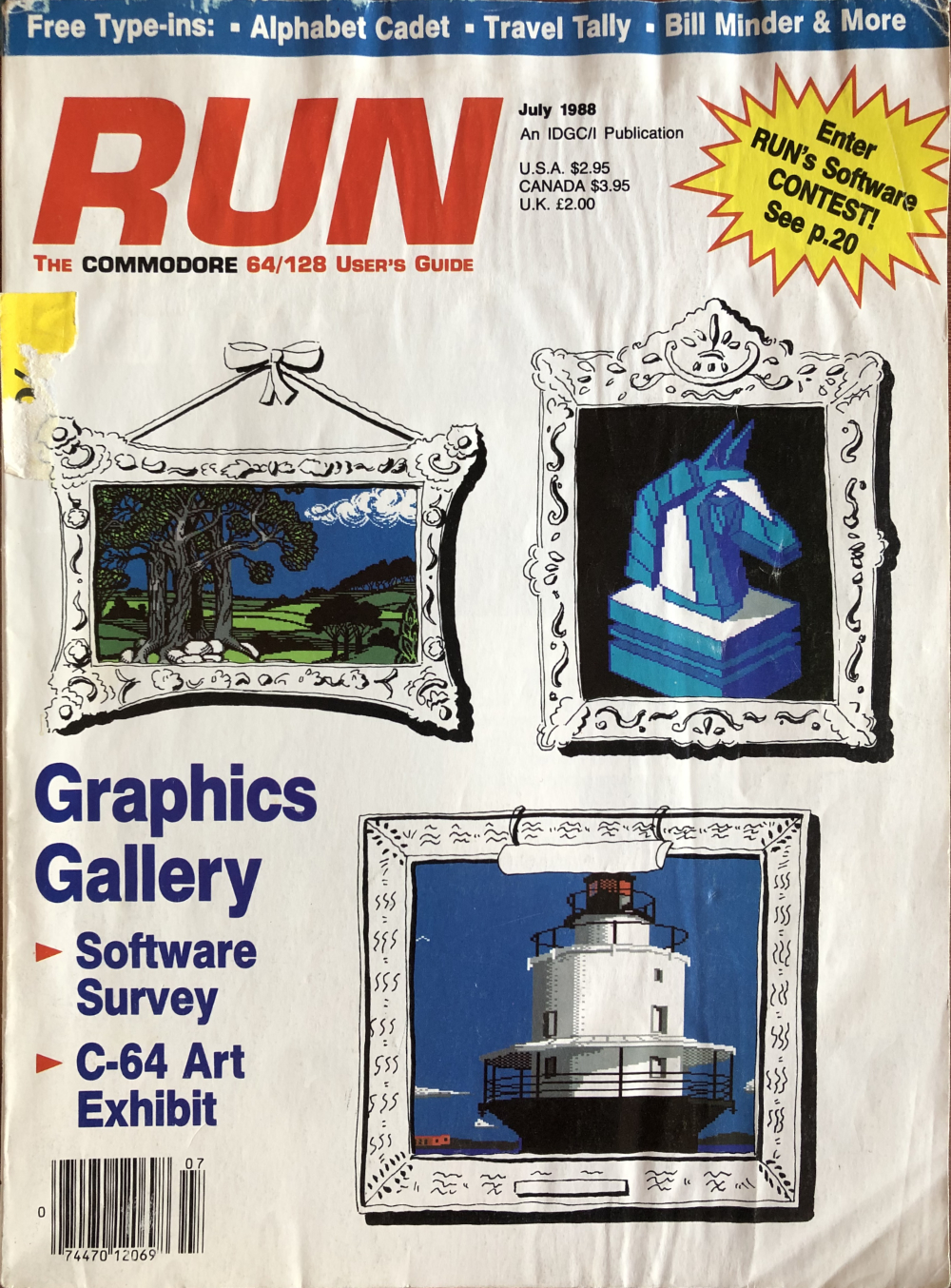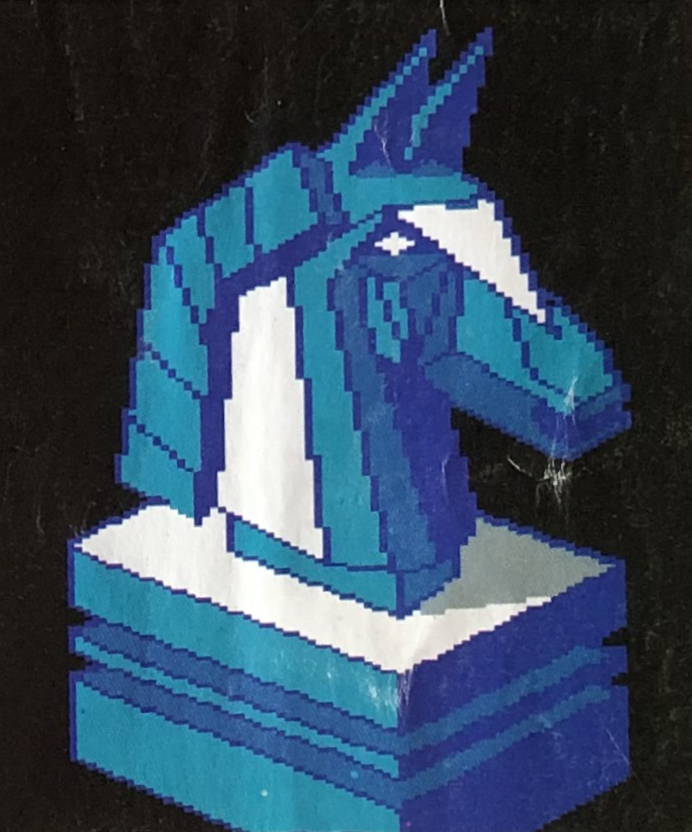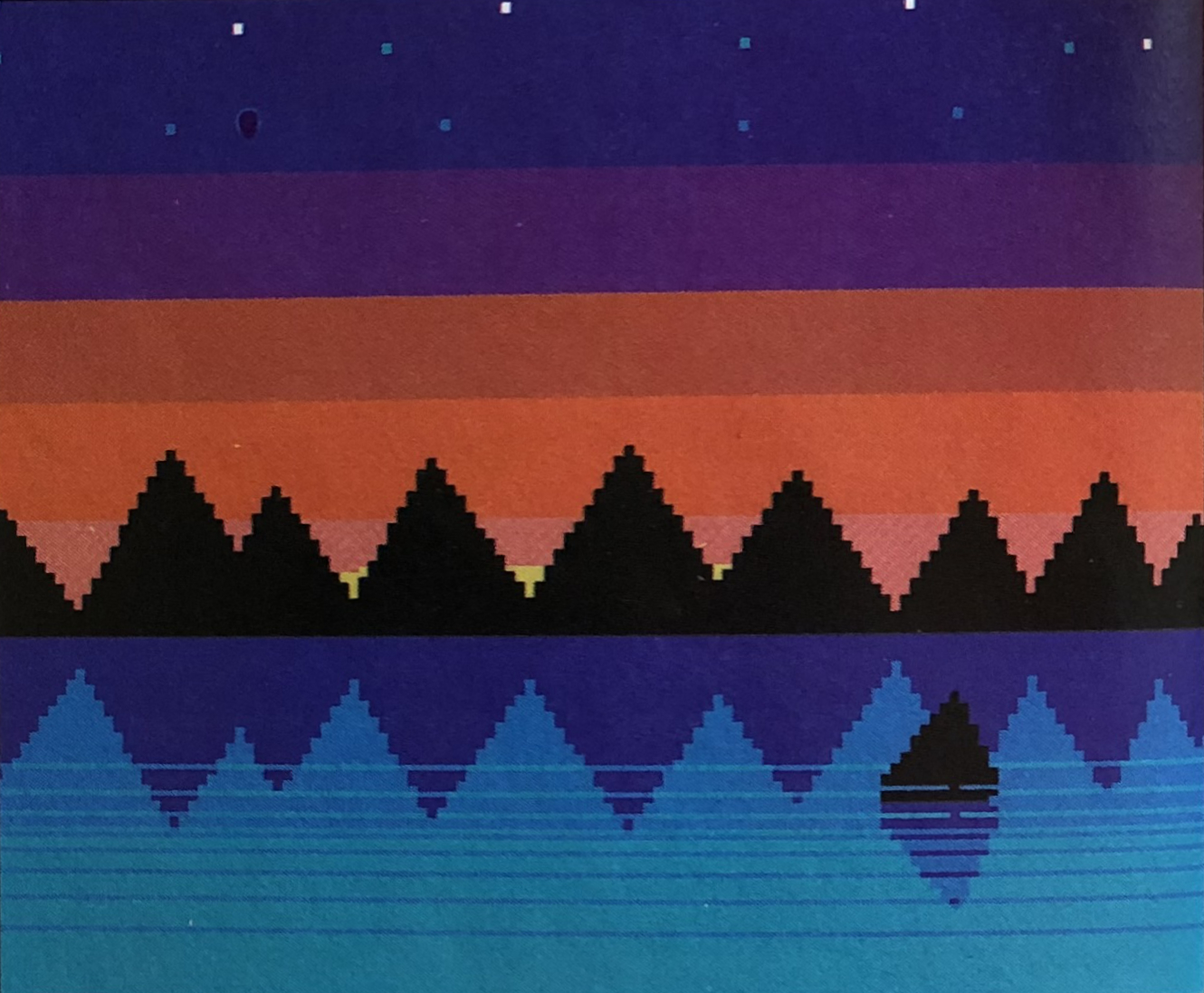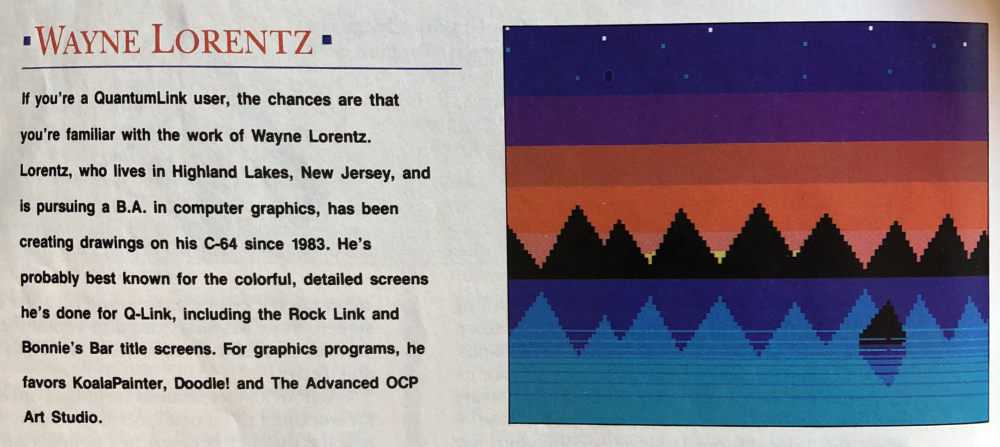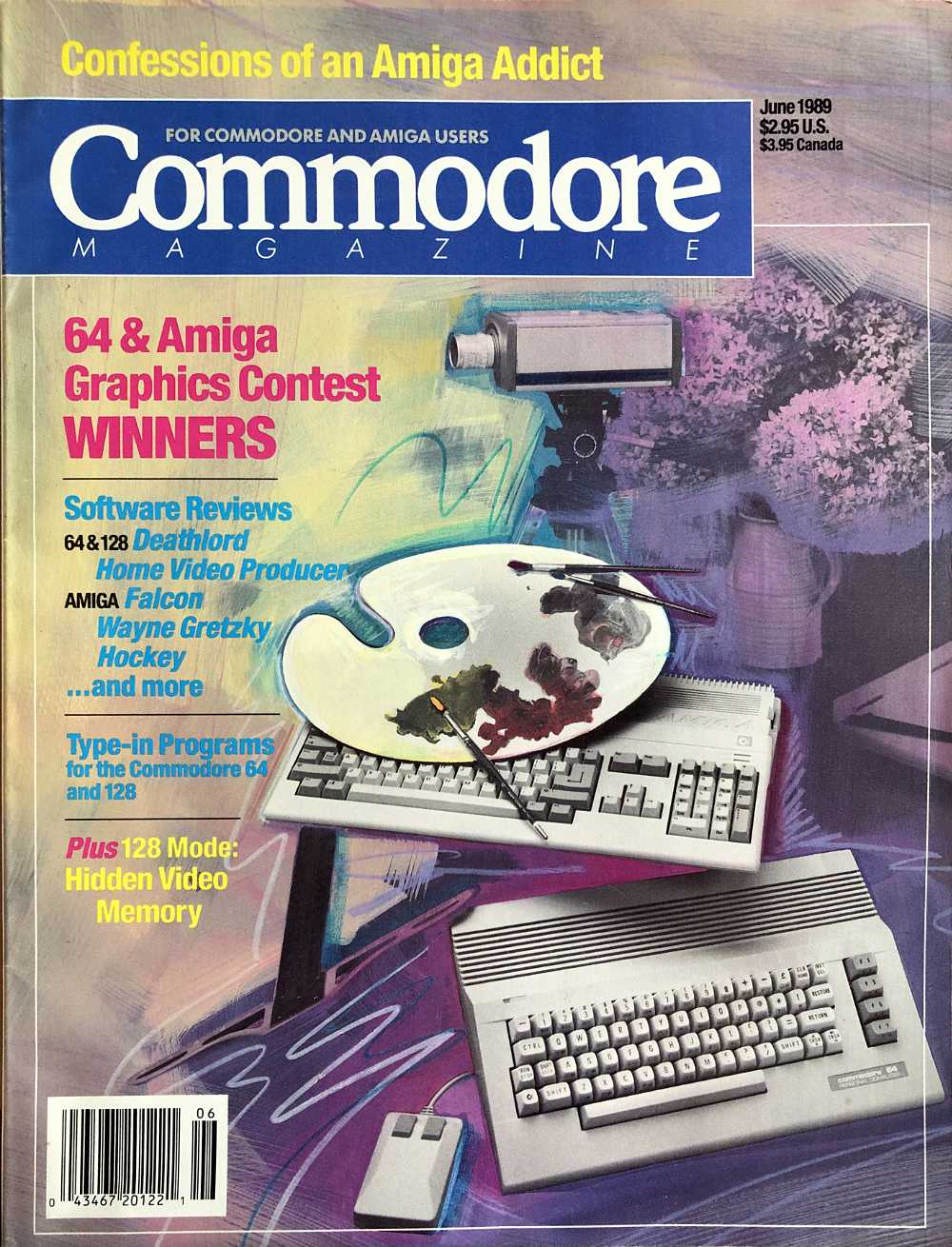
For the second time in two years, Iʼm in a computer magazine.
Not on the cover this time, and itʼs only for scoring an honorable mention in a contest, not as part of an editorial spread, but itʼs something.
Back in February, I saw a note on the ARB BBS down in South Amboy that Commodore Magazine was having a computer painting contest that actually included art made on a Commodore 64. These days, when people talk about computer graphics, itʼs all about the Amiga. But this contest actually took entries from us 64 people. Itʼs probably the last one that will. I wonder if this is how VIC-20 people felt in 1983.
Since I had luck getting my art published in Run magazine last year, I chose a picture from my files, bought a floppy disk mailer from the Post Office, and sent it out. Yesterday, I got a copy of the magazine in the mail, along with a check for $100. The magazine should be on newsstands in a few weeks. The check will be converted into gas money for the Summer.
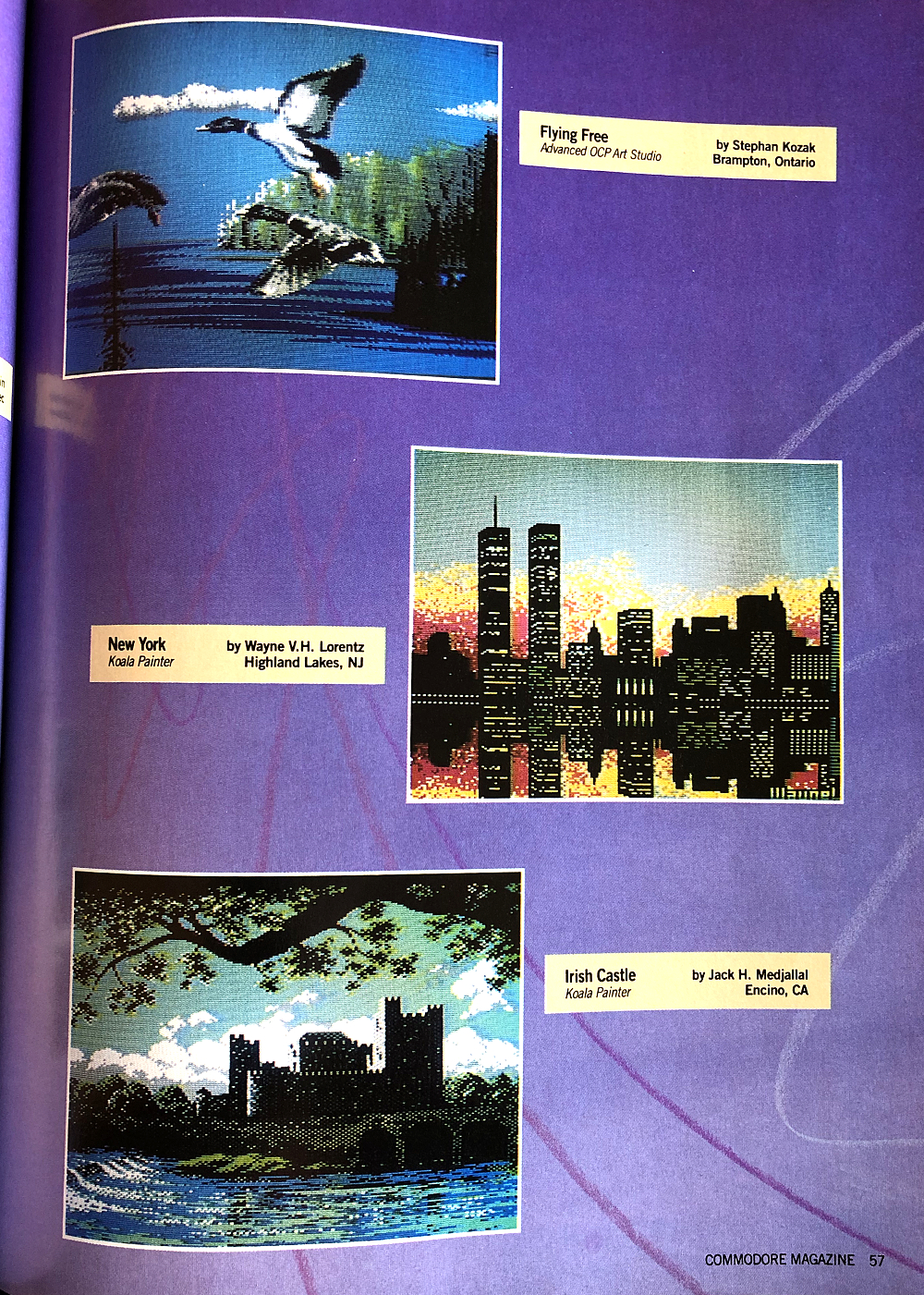
Whatʼs nice about it this time around is that the magazine lists what software each artist used to create their picture. Iʼm an Advanced OCP Art Studio user these days, but the picture I submitted is rather old, so itʼs listed correctly as being done in Koala Painter. Iʼve also moved from using a Koala Pad for input to an Atari Trak-Ball. I adore my Pad, but itʼs nice to sit back with my feet up on the desk and a finger on each button while moving the ball around with one thumb. Very comfortable for long painting sessions.
Iʼd gratified to see that so many other C-64 artists also use the same programs I do — Koala Painter and OCP. Thereʼs also a couple of programs listed that I donʼt know: MicroIllustrator, and Artist. And itʼs nice to see people are still creating wonderful things with Doodle!. That was my first painting program, and the only reason I donʼt use it anymore is because I prefer the extra colors available in the low-resolution 160x200 mode, while Doodle! only works in the high-resolution 320x200 mode.
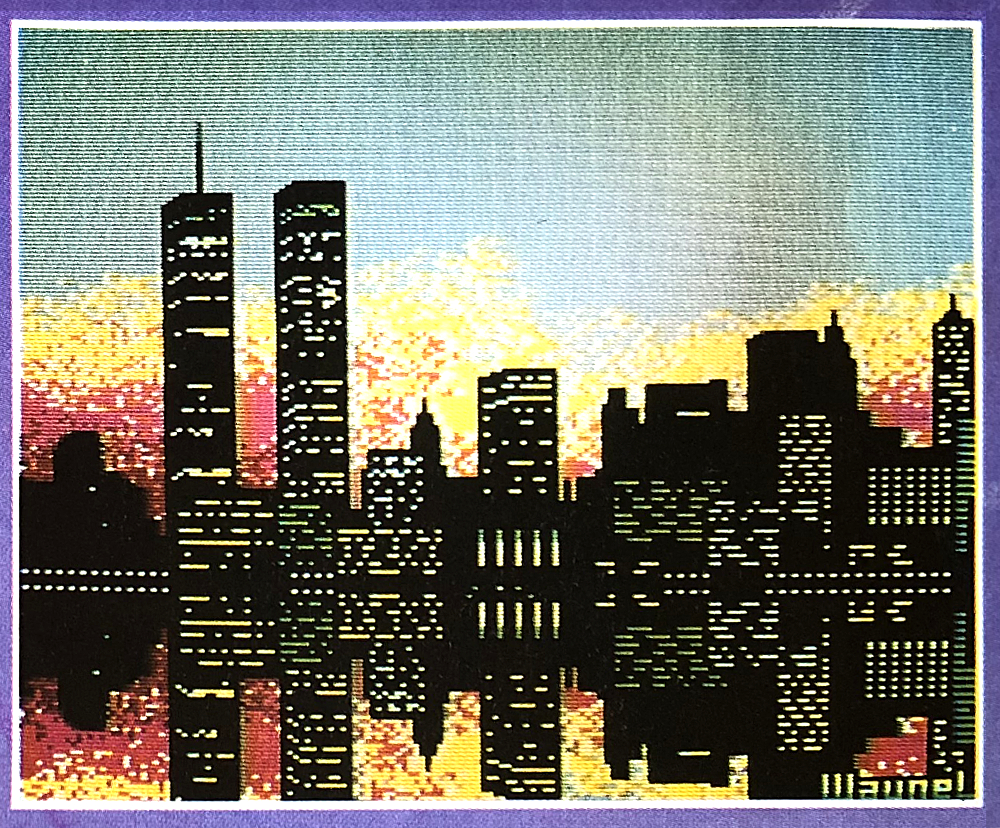
Thatʼs not to say that you canʼt do incredible things with Doodle!; you absolutely can. Jim Sachs works in 320x200x2, and he is the best of the best. But it requires a lot of thought and planning. High resolution mode is best used by analytical minds who can think far ahead of their creative side. When I started out, that appealed to me a lot. Getting a block of colors to line up the way I wanted was like winning a chess match against a VIC-Ⅱ chip. But now the challenge is different. Now itʼs about using color and shadows to overcome the limits of the 4x8x3 color cell.
Itʼs Friday, so my parents should come home tonight, and Iʼll show it to them then. Hopefully they see more in it than the check. I tried to show it to my friends this morning, but none of them seemed to care. Theyʼre very wrapped up in the prom that Iʼm not going to. Susan was a little supportive, but I think she was just being polite. Sheʼs that way. Everyone else dismissed it as playing with a computer toy.
Something I notice is that the subject matter of most of the art is very traditional. This struck me when I saw Anne Coleʼs Bison. I thought to myself, “Iʼve seen this somewhere before.” And then I realized that what Iʼve seen before is a photo of a bison with snow on its face. And Iʼve seen it maybe a hundred times.
These artists — including Ms. Cole, who is using DeluxePaint on an Amiga — have access to the best technology that money can buy. And instead of creating something new with their imaginations, theyʼre re-creating the art of yesteryear. I, too, am guilty of this with my digital painting of the Twin Towers. Itʼs something Iʼve seen a thousand times, and something thatʼs been photographed by other people millions of times. But can it be considered good, if itʼs something that could be done better with a camera, or even a paint brush?
Maybe thatʼs why my friends were unimpressed. Being immersed in technology, Iʼm overcome by the notion of imagined possibilities turned into reality. But the actual reality that my friends saw is that weʼre just a bunch of geeks frittering away with blocky finger paints. Maybe people who are not into computers see the results, not the method, and so are able to judge the results, not the effort.
What I showed them was my proud technological achievement. What they saw was less good than a three-year-old attacking the wainscoting with a pack of blunt Crayolas. It hurts to think of it, but they must be right. It wouldnʼt hurt otherwise. Strip away the artifice of the method, and the art that remains is poor. Nobody cares how hard it was for you to climb the mountain. All they care about is that you planted a flag on the summit.
